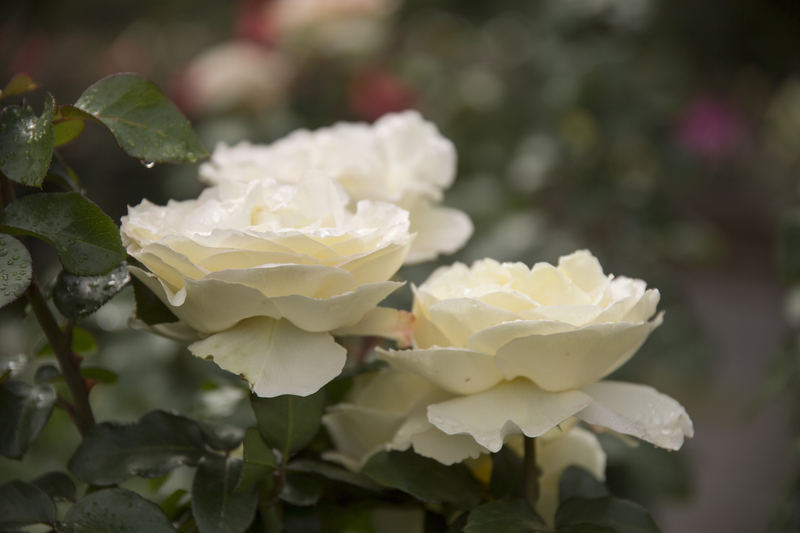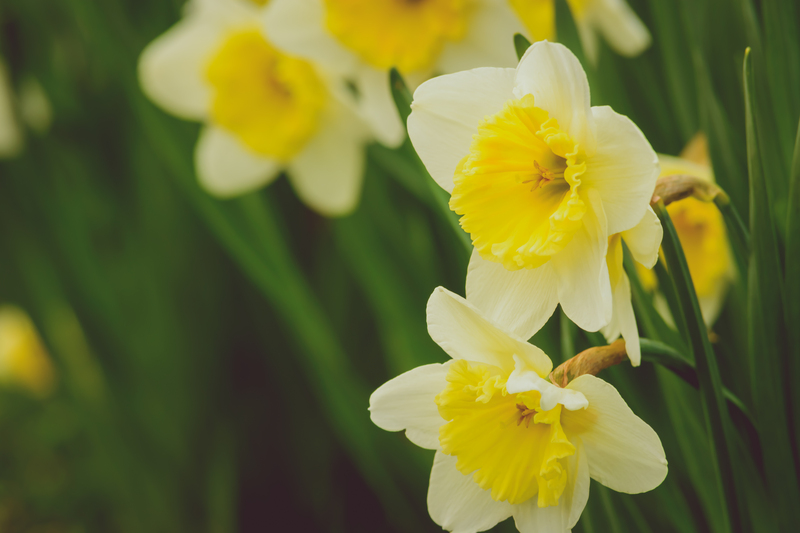How to Design a Garden Kids Will Love and Enjoy
Posted on 21/08/2025
How to Design a Garden Kids Will Love and Enjoy
Designing a garden for children is a rewarding and enjoyable experience. A well-crafted children's garden not only encourages outdoor play and learning but also creates a space where lifelong memories are made. Whether you have a small backyard or a large open space, there are countless ways to create a fun, safe, and educational garden that your kids will love and enjoy. In this comprehensive guide, we'll explore every aspect of designing a garden that's tailor-made for children, using creative ideas, practical tips, and expert insights.
Why Creating a Garden for Kids Matters
In today's digital age, children are spending less time outdoors and more in front of screens. A children's garden is more than just a play space; it's a healthy sanctuary where they can connect with nature, develop vital skills, and find joy in the simple pleasures of the outdoors.
- Encourages Physical Activity: Gardens promote running, jumping, and climbing, all of which help improve health and motor skills.
- Stimulates Creativity: Gardening sparks imagination and creativity through hands-on exploration.
- Fosters Responsibility: Looking after plants and spaces teaches children to care for living things.
- Supports Learning: Gardens are rich with opportunities to learn about science, nature, and sustainability.

Key Principles to Designing a Garden for Children
1. Safety First
Safety is the foundation of any kids' garden design. Begin by assessing your yard for hazards, ensuring a secure, enclosed area, and choosing non-toxic plants. Incorporate soft surfaces near play equipment, and avoid sharp corners and edges.
- Install sturdy fences and gates to keep children safe and secure.
- Remove or cover water features unless properly supervised.
- Keep dangerous tools, chemicals, and machinery locked away.
- Choose plants with smooth leaves and no thorns or toxins.
2. Think Like a Kid
When planning a child-friendly garden, imaginative play is key. Get down to your child's height and consider what will be exciting from their perspective. Think about bright colors, sensory experiences, secret hideouts, and flexible zones for different activities.
- Plan winding paths and little trails for adventures.
- Design cozy nooks, hiding spots, or willow teepees.
- Add interactive features like stepping stones or a fairy garden.
Creative Ideas for a Garden Kids Will Love
1. Create Play Zones
Designate different zones for various activities. These could include movement areas, quiet spots, and nature exploration zones, ensuring there's something for every personality and mood.
- Active Play Zone: Encourage movement with swings, slides, climbing frames, or obstacle courses built with logs and stones.
- Creative Arts Area: Set up an outdoor chalkboard, painting table, or crafts station under a shady tree.
- Mud Kitchen & Water Play: Install a mud kitchen or water table for sensory, messy fun.
- Quiet Reading Nook: Add a hammock, beanbags, or bench surrounded by sensory plants for reading or quiet time.
- Wildlife Spotting Corner: Include bird feeders, bug hotels, and wildlife-friendly plants to observe nature up close.
2. Integrate Edible Gardens
Incorporating edible plants is a fantastic way to foster healthy eating habits and teach kids about where food comes from. Allow children to choose and plant their favorite fruits, veggies, or herbs.
- Plan a mini vegetable patch with easy-to-grow crops like carrots, strawberries, and cherry tomatoes.
- Grow herbs such as mint, basil, or lavender for touch and smell.
- Create a pizza garden with tomatoes, peppers, basil, and oregano.
Make sure raised beds and containers are the right height for small gardeners, and encourage kids to take charge of watering and harvesting their own produce.
3. Use Sensory Planting
A truly enchanting child-friendly garden stimulates all five senses. Choose plants and features that are fun to touch, smell, hear, see, and even taste.
- Texture: Lamb's ear, grasses, and ferns feel wonderful to touch.
- Scent: Lavender, rosemary, and scented geraniums offer calming, aromatic experiences.
- Sound: Rustling bamboo, ornamental grasses, or a simple water fountain can create gentle sounds.
- Color: Bright flowers and foliage in rainbow hues keep the garden cheerful and eye-catching.
4. Add Kid-Sized Structures & Features
Give kids features they can call their own. Consider:
- Willow Tunnels or Teepees: Living play structures that double as hideouts.
- Treehouses or Forts: Classic favorites for hours of imaginative play.
- Pergolas or Shade Sails: Provide shade for safe play even on sunny days.
- Sandbox: Encourage digging, building, and creativity.
- Stepping Stones: For hopping, balancing, or as a path through flower beds.
5. Make Room for Wildlife
Invite local wildlife into your garden for natural learning experiences. Install butterfly-friendly flowers, bird feeders, or bee hotels. Watching wildlife is endlessly exciting for kids--and teaches respect for nature.
- Plant native species to attract butterflies and bees.
- Construct a small pond (safely fenced for younger children).
- Include log piles for bugs and hedgehogs to hide in.
Planning Your Children's Garden: Step-by-Step
Step 1: Get the Kids Involved
The most engaging gardens are those kids help plan! Bring your children into the process of selecting plants, choosing play equipment, and designing their dream space.
- Draw up garden design ideas together.
- Visit local gardens or playgrounds for inspiration.
- Create a wish list of must-have features.
Step 2: Map Out the Layout
Using your garden's size and shape as a canvas, sketch your ideas to scale. Divide the area into zones and plan pathways, making sure there's room to grow and for kids to move freely between spaces.
- Consider sun exposure and shade when placing zones and plants.
- Use natural curves for a more playful, organic look.
- Visualize sightlines: Parents should be able to see children in all areas.
Step 3: Choose Kid-Safe, Low-Maintenance Plants
Select plants that are easy to care for, resilient, and safe for children (avoiding poisonous berries or thorns). Native plants are often best, as they thrive in your local climate and attract wildlife.
- Sunflowers, nasturtiums and marigolds for cheerful colors.
- Fast-growing climbers like sweet peas or morning glories for instant impact.
- Grasses and bamboo for rustling, sensory appeal.
Step 4: Add Paths and Movement Spaces
Paths mean adventure! Use stepping stones, bark chips, gravel, or turf to build winding routes that spark curiosity and offer opportunities for movement and exploration.
- Balance beams, log trails, and zig-zag paths keep energy high.
- Consider accessibility if you have strollers or wheelchairs.
Step 5: Incorporate Creative and Educational Elements
Make your garden a space for learning as well as play. Add signs for plant names, install a simple weather station, or build a bug hotel. These features turn your play garden into an outdoor classroom!
- Chalkboards or signposts for labeling plants and drawing.
- Magnifying glasses or bug jars for nature study.
- Wooden rulers for measuring plants, tracking growth over time.
Step 6: Ensure Year-Round Appeal
Designing a kids garden for all seasons keeps children engaged, rain or shine. Mix evergreen shrubs with perennials, bulbs, and annuals for continuous interest and color.
- Include hardy evergreens for winter structure.
- Plant bulbs for early spring blooms and sensory excitement.
- Introduce movable planters so children can garden indoors in winter months.
Tips for Maintaining a Kid-Friendly Garden
It's vital to keep your children's garden tidy, safe, and inviting, so your kids continue to enjoy it throughout the year. Here's how:
- Regularly check equipment, fences, and structures for safety.
- Watch for overgrown plants and keep paths clear.
- Encourage children to help with watering, weeding, and harvesting, teaching them responsibility.
- Rotate toys, features, and activities to keep things fresh and exciting.
Eco-Friendly and Sustainable Garden Practices
Teach kids about sustainability by incorporating environmentally friendly practices into your garden design:
- Use rain barrels to collect water for the garden.
- Compost food scraps and garden waste to create healthy soil.
- Encourage organic gardening--avoid chemicals and use natural pest controls.
- Plant pollinator-friendly flowers and create habitats for beneficial insects.

Frequently Asked Questions About Designing Kids Gardens
What Are the Best Plants for a Kid-Friendly Garden?
The best plants are non-toxic, hardy, and interactive. Sunflowers, snapdragons, strawberries, beans (for wigwams), herbs, and lamb's ear are all fun and safe choices.
How Can I Make the Garden Safe for Toddlers?
Install secure fencing, use soft ground surfaces, remove toxic plants, keep tools and chemicals locked away, and supervise children at all times. Consider a dedicated toddler area for extra security.
How Do I Design a Small Garden for Kids?
Even the tiniest garden can be magical! Use vertical planting, container gardens, and compact edible patches. Incorporate multi-functional elements, such as raised beds that double as seats or paths that serve as play areas.
Can a Children's Garden Be Educational?
Absolutely! Gardens are ideal outdoor classrooms for teaching about nature, food cycles, responsibility, science, and sustainability. Add nature journals, labeled plants, and observation tools to nurture learning.
Conclusion: Growing Joy in Your Garden
Creating a garden kids will love and enjoy is a step towards nurturing happier, healthier children. Whether you prioritize imaginative play, gardening, or exploring wildlife, the keys are creativity, flexibility, and fun. Involve your kids every step of the way, embrace their ideas, and watch as you all grow a paradise filled with laughter, wonder, and cherished memories.
If you're ready to dig in, remember: a child-friendly garden is more than just a plot of land--it's a world of adventure, learning, and pure, unfiltered joy. Start planning your children's garden today and give your family the gift of the great outdoors!
For more tips and inspiration on designing a garden kids will love and enjoy, explore our website's gardening section or consult local horticultural resources for child-safe plant lists specific to your area.



